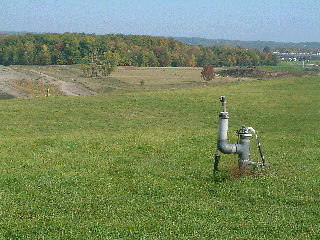Powys County Council v Price & Anor, Court of Appeal – Civil Division, July 27, 2017, [2017] EWCA Civ 1133
The Court of Appeal held on 27 July that Powys County Council was NOT liable for pollution created by its statutory predecessor council landfill operator. This important judgment increases the liability risks for landowners and occupiers near operational and historic council landfill sites.
Under a local government re-organisation, Powys County Council had via a Welsh Statutory Instrument taken over ‘liabilities’ of its predecessor the Borough of Brecknock. The court held that liabilities could not be retrospectively imposed on Brecknock under the contaminated land regime (Part 2A EPA) that came into force in Wales on 15 September 2001 after the predecessors ceased to exist – i.e there were no liabilities capable of passing to the successor council. This meant that the innocent landowner was the only appropriate person that could be found.
The case has similarities with the 2007 decision of the House of Lords in R (National Gas Grid (formerly Transco plc)) v Environment Agency where National Grid was not liable for pollution caused by predecessor gas companies.
The Powys case facts
The landfill site at Powys was operated from the 1960s until 1993 by Builth Wells Urban District Council and subsequently by the Borough of Brecknock on part of a farm owned by the respondents. The landfill was used to tip domestic and commercial waste.
Under a licence agreement with the farm owner, Brecknock was allowed to tip refuse on the site provided that Brecknock carried out monitoring, water treatment and site restoration works to bring the site back into agricultural use.
After local government re-organisations, Builth council and then Brecknock council were abolished and in April 1996 Powys County Council came into existence under the Local Government Re-organisation (Wales) (Property etc) Order 1996.
Powys assumed it had taken over the predecessor’s liability for the site. The council carried out landfill monitoring which led to concerns over leachate pollution of two rivers which had been designated as SSSIs.
The contaminated land regime rules under Part 2A EPA 1990 provide that Class A causers or knowing permitters must be targeted first. If no Class A persons can be found, then the innocent landowner or occupier is liable as Class B person.
After taking legal advice on the National Grid House of Lords judgement, Powys County Council’s contaminated land officer as regulator challenged the assumption that Powys had taken over the statutory liabilities of Brecknock and gave notice to terminate the licence.
The respondents sought a declaration that the transfer of liabilities from Brecknock to Powys included a contingent liability for contaminated land under Part 2A EPA 1990.
The key issue was whether Powys was responsible for landfill contamination and land restoration works on the basis that it had taken over the “liabilities” of its statutory predecessor Brecknock council under the 1996 Order.
The Court of Appeal held that Powys council did not take over the Class A causer liabilities of Brecknock in 1996 since the ‘liabilities’ were not created until Part 2 EPA came into force in Wales in September 2001.
Builth and Brecknock councils were no longer in existence so could not be “found” as Class A causers.
What are the implications?
1. There are 1000s of operational and historic local authority landfills sites across Great Britain. Many date back to the 1950s through to the 1980s when technical standards on capping were poor. At many of these sites there will still be pollution concerns arising from leachate and landfill gas, including explosion and asphyxiation risks. Clean up liabilities can cost hundreds of thousands of pounds.
2. There is a common misconception that contaminated land liabilities are based solely on the “polluter pays” principle – In Powys, the successor council was NOT responsible for contamination resulting from the council tip, even though its statutory predecessors operated the landfill, tipped the waste and were clearly the polluters. Since the predecessor bodies had been abolished by statute, they could not be found as “appropriate persons”. The ‘liabilities’ of the predecessor had not been transferred to Powys council and the innocent landowner was liable.
3. There is a financial hardship test under Part 2A that can potentially exclude landowners and occupiers with minimal funds, however this is not guaranteed to work. Landowners, trustees and estate companies in agricultural areas with substantial assets are at greater risk.
4. Although funding for Part 2A enforcement has been withdrawn (in England), local authorities in England, Wales and Scotland still have a statutory duty to identify contaminated land in their areas and to secure remediation. Gassing landfills posing unacceptable risks to human health or groundwater will be priority targets for local authorities.
5. In practice the Powys decision may have little effect on Part 2A enforcement. Formal Part 2A investigations have almost ground to a halt as cash stripped councils focus on securing remediation through the planning process. There is also political pressure not to to target innocent landowners and home owners.
6. The Court of Appeal decision is likely to have more impact on property transactions as landowners, buyers and investors re-evaluate the liability risks associated with landfill sites.
7. The Powys case focuses on Part 2A liability, however in paragraph 52 of the judgment the Judge seems to indicate that the tipping licence might have imposed a contingent contractual liability that could have benefited the owners of the land. This stresses the importance of owners making sure that leases and tenancy agreements have ‘water-tight’ liability clauses.
8. Solicitors should always undertake desktop searches to check if there are current or historic landfills on or within 500m of the property and then raise further enquiries and consider environmental insurance protection if the desktop report recommends further action.
9. If anyone has concerns about contaminated land liabilities, the operation of the various environmental regimes and the protections available, they should seek legal advice from an environmental lawyer.
Keith Davidson
www.elmlaw.co.uk

